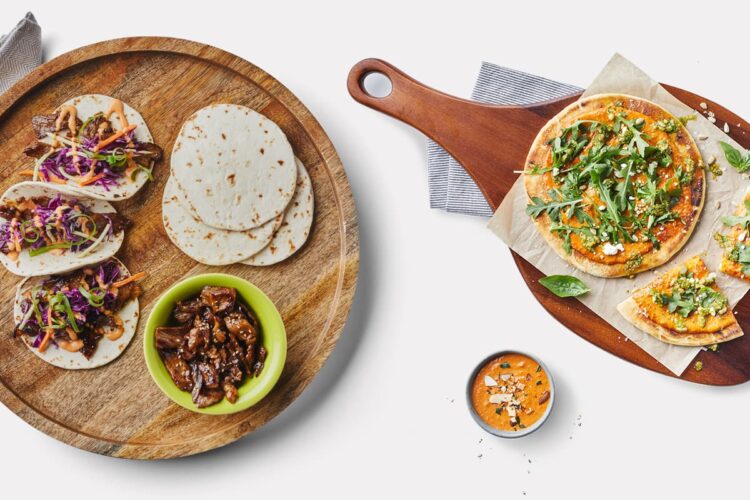Now more than ever, it’s essential to learn about the consumer. Their habits, desires and values provide a roadmap for the future of new product development and existing product improvements.
It is post-peak pandemic, and the world has gone back to its new normal. School is back in session; some workers are returning to an actual office; cooking at home is necessary but not always looked forward to and if one’s wallet can afford it, restaurants are taking in-dining reservations.
For the baking industry, the other side of this new normal looks like a whole new world. During the pandemic, supplies were tight, but sales were high because people were eating at home more often. Now, wheat supplies are even more unstable because of the war in Ukraine, sales are down, and prices are high even for bakery staples like sliced sandwich bread and hamburger buns, key legislation affecting the baking industry is up for discussion, and Millennials have taken over the buying power from Boomers, with younger consumers following close behind. The American Bakers Association called this a time of “ongoing hurdles.”[i]
Now more than ever, it’s essential to learn about the consumer. Their habits, desires and values provide a roadmap for the future of new product development and existing product improvements.
The Rise in Flatbreads and Tortillas as the Under 40s Gain Buying Power
During the pandemic, a major shift in demographics occurred across the United States. For the first time ever, Millennials outnumbered Boomers. Add in the youngest generation (Gen Z) of up-and-coming consumers and one begins to see the purchasing power of those under the age of 40.
Think thin and bold for this demographic. Tortillas, wraps and flatbreads are the preferred bread choice. This lends itself to a literal world of global-inspired recipe possibilities for the home cook, including Mexican burritos, Indian naanwiches, Korean barbeque tacos, Italian flatbreads and perhaps a way to add some interest to a grilled burger.
The popularity of a fusion of cuisines packed inside a tortilla explains the anticipated 3.4% year-on-year sales growth for tortillas, according to Future Market Insights.[i] For the health-minded consumer, there are whole grain, stone-ground corn and high-fiber tortillas. A growing interest in plant-based diets is fueling new product innovations for tortillas made from cauliflower, sun-dried tomato and spinach. Paleo and Keto-food followers are drawn to tortillas made with high-fiber inulins, almond flour, flaxseed and cassava.
Younger shoppers find inspiration on YouTube for new recipes and cooking techniques. International food bloggers have introduced impressionable and adventurous new cooks to naans, chapattis, tortas, lavash, pitas and injiras as a way to wrap and sop up ethnic grilled meats, braises and stews.
Breads with a story piqued interest among Millennials and Gen Z just before the pandemic. The pandemic put a hold on this type of new product development because of supply chain and ingredient challenges. It may be time to consider diversified lines that meet the desires of these globally-minded consumers.
Health in the Bakery Category
The pandemic-fueled home baking trend resulted in consumers gaining a better understanding of ingredients and baking processes, while also becoming more health-conscious. After indulging in comfort eating during the early months of the pandemic, there was an increased desire to eat healthfully and maintain a healthy weight. As a result, consumers are now seeking bakery labels that denote authentic, clean and natural products.
Clean and natural are the top-ranking terms among consumers of all ages, with 61% of all surveyed shoppers valuing Clean Labels as an attribute for baked goods. In proprietary research conducted by Corbion, natural is the term most closely associated with the meaning of Clean Label. Even younger shoppers appreciate products that are made with fewer ingredients and have easily understandable names. This trend indicates that consumers are not only looking for products that are healthier, but also for those that are transparent and authentic.

There is an opportunity for the bakery industry to take advantage of a higher demand for healthy foods, by considering the following in product formulations:
- Source wholesome and healthy ingredients that are easy to recognize on the label.
- Reduce sugar and find ways to add more protein to baked goods. After the first year of the pandemic, 60% of consumers expressed a desire to eat less sugar and 45% said they wanted to eat more protein.[i]
- Chemical-sounding ingredients have a negative connotation. This can even apply to bakery goods that are in the indulgent categories of pastries and cakes.
- Fiber is king in the baking sector and plays a significant role for those trying to manage blood sugar through diet and lifestyle. High-fiber, low-sugar breads, tortillas and bakery snacks appealing to those following a low-carbohydrate and/or keto eating plan.
- Lastly, sustainability has a huge crossover with health-minded consumers, particularly among those younger than age 20.
In summary, there is no doubt that the baking industry is in a time of transition that is being influenced by changing consumer demographics and national and world events. Though challenging, there are opportunities for product innovation to meet the desires of your future customers.
[i] American Bakers Association, Outlook 2023. https://www.worldbakers.com/market-insights/five-bakery-trends-in-2023-according-to-the-american-bakers-association/


